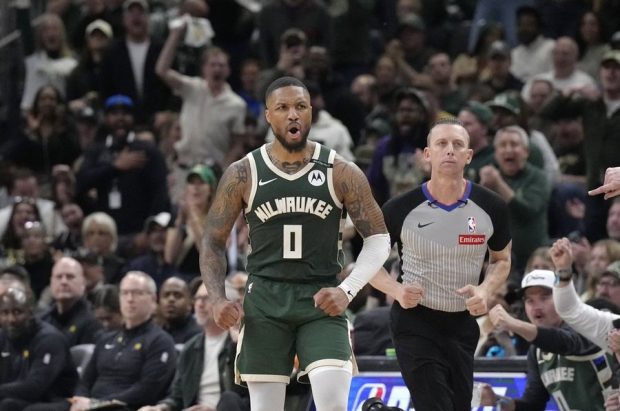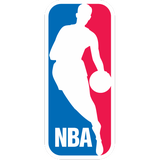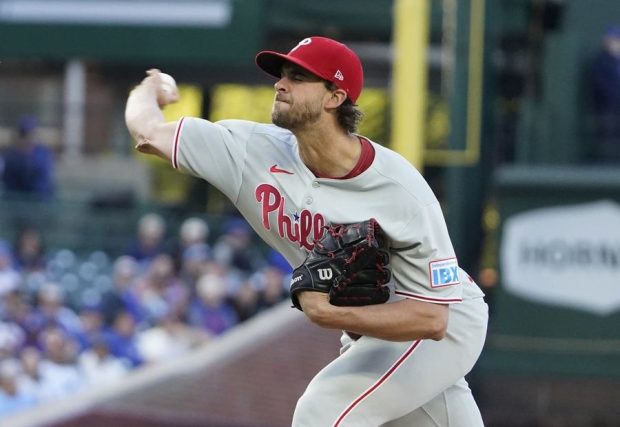
It began as locker room chatter, a pipedream that soccer players fantasized about between practices.
Today, that dream becomes reality when Vancouver Rise FC faces Calgary Wild FC in the inaugural game of the newly formed Canadian women’s soccer league – the Northern Super League (NSL).
For the first time, Canadian professional women’s soccer players will play for Canadian professional women’s teams on Canadian soil. And, if league founder Diana Matheson has her way, the country’s young talent will soon be part of a broader push to strengthen not only the league but the national team too.
Advertisement
“In the last five, six years, we saw how much investment was going (into women’s soccer) around the world,” Matheson said. “It was clear wherever countries — like Spain, like England — invested in their professional leagues, you just saw immediate impact at the national team level.”
When the Olympic bronze medalist, who played in the National Women’s Soccer League (NWSL) for eight years in the U.S., retired in 2021 after several seasons plagued by injury, she knew that the time to form a league was now. Wait any longer, and the global women’s soccer industry would grow too much and Canada wouldn’t be able to compete for talent and branding.
The problem: no one was making any moves.
Matheson, who is now the NSL’s chief growth officer, completed a Master of business administration (MBA) at Queen’s University thanks to a generous grant from the Canadian Olympic Committee, topped it off with a program set up by UEFA that helps former players transition to the business side, and, along with business partner Thomas Gilbert, took on the herculean task of bringing a league to life.
Less than three years on, the league has six founding franchises: Calgary Wild FC, Halifax Tides FC, Montreal Roses FC, Ottawa Rapid FC, AFC Toronto, and Vancouver Rise FC. Games run from April through October and branding partners include Coca-Cola, Toyota and Canadian Tire.
Former Kansas City Current midfielder and Canadian Olympic gold medalist Desiree Scott has come out of retirement to play for Ottawa Rapid FC. She called Matheson the “perfect person” to form the league. “You don’t say no to a Diana,” Scott said.
Matheson, who played abroad in Norway before joining the NWSL from its inception in 2013, had a clear vision of what she wanted the NSL to look like. She’d had the chance to learn from the American league’s growing pains, and called the fact she was starting from the ground up, “a gift.”
Advertisement
The NSL’s official tagline invites fans to, “Be where it all begins.” More than just a call to action, it highlights a distinct sense that everyone is invested in avoiding past mistakes. After the 2022 investigations that found years of systemically ignored sexual harassment and abuse within the NWSL, and amid a generalized culture of abuse in women’s sports, there’s a certain weight to the fact that the NSL is made by women, for women — and by players, for players.
Expanded maternity leave, guaranteed contracts and players not being waived or traded without their consent — historic gains made by the NWSL’s 2024 collective bargaining agreement — have been organically built into the NSL’s standard player agreement.
“It shouldn’t take seven years to have a good relationship with your players,” Matheson said. With no collective bargaining agreement in place (NSL teams only recently had the players needed to form a committee), the focus is on providing a high standard of care off the bat with strong channels of communication.
“I was part of the NWSL in its inaugural year,” Scott said. “We’re already leaps and bounds ahead of what the NWSL was in year one, even in terms of just having our own space, the conversations we’re having, facilities being built. I feel like we have a voice from the jump, which I think is super important for players to be invested in as well.”
When midfielder Sofia Hagman was offered the chance to play for Vancouver Rise FC, she could not have been more impressed with the whole package.
“This is what I have been dreaming of my whole entire career,” Hagland said. “Creating this world-class environment that is not only felt for women’s soccer in Canada but also (on) the global stage.”
Hailing from Sweden, Hagman said she feels much less of a culture shock in Vancouver than she did on other contracts. She described considerations as simple as a weekly training schedule being a huge step up from what she experienced in Spain with Sporting de Huelva. There, she would get a text the night before outlining what time training would be in the morning. Now, she’s able to plan her week, balancing her personal life while preparing for practice.
Advertisement
“They want us to succeed so badly, so they’re just giving us all the tools you can possibly think of for success,” she said.
International players will always be a key ingredient in elevating the caliber of any club or league. But Matheson said that her priority is still developing Canadian players to broaden the field of talent for the national team. Right now, that means enticing Canadians back to Canada. So far, they have four current national team players signed to NSL clubs. The goal, she said, will be to have approximately one-third of the Women’s World Cup roster playing for the NSL by the 2027 tournament in Brazil.

Defender Emma Regan, who has represented Canada at the international level, will play for AFC Toronto. (Vaughn Ridley / Getty Images)
Speaking from national team training camp earlier this month, Emma Regan, who signed with AFC Toronto after stints in the UK and Denmark, gave a glowing report of her new team and the facilities she’s been able to enjoy.
“(Playing in) Europe was an amazing experience, and I’m really glad that I did that,” Regan said. “But there’s just a sense of pride to play in Canada for a Canadian team.”
Canada national team coach Casey Stoney understands the importance of a domestic league. As part of the Women’s Super League in England as a player and coach, she saw the direct support it provided the national team on its decade-long journey to become European champions.
“Ten years later, no coincidence, they win the Euros. I know how important it is to have a league in your home country. It builds communities around the teams, grows the fanbase, and ensures that young players have a platform to develop and progress through the pathway without having to go elsewhere,” Stoney said. “I believe that’s essential for the future of our game in Canada.”
Despite the many initial successes of the nascent league, Matheson found that there were many times she was surprised by how difficult it was to build — and run — a league.
Advertisement
“We’re coming from a player background,” Matheson said. “A lot of things, to a player, are like, ‘Oh, why can’t the league or club just do that thing better?’ And then as soon as you see under the hood, you realize, ‘Oh that’s much harder than you thought.’”
Matheson described the process of creating a game schedule for the league as particularly gruelling.
Like many NWSL teams, NSL teams are second or third tenants in many shared stadiums. That means waiting for other leagues to set their schedules first. For example, AFC Toronto will share York Stadium with York University’s varsity teams, Major League Rugby’s Toronto Arrows, as well as the men’s Canadian Premier League team, York United.
The NSL must then take the few days the stadiums are available, match them with broadcast availability and match that with the international calendar before juggling each club’s individual dates with one another. It was one of the many things Matheson was glad to delegate as the business grew.
Looking ahead, future growth depends on building an audience. Matheson said they have metrics that show there’s been a solid Canadian fanbase following women’s soccer since at least 2012, and sponsors were ready to get on board. In 2015, when Canada hosted the Women’s World Cup, 20.8 million Canadian viewers tuned in, nearly one-third of all Canadian households.

Canada lost in the quarterfinals of the 2015 World Cup, but drew a record audience as host of the tournament. (Rich Lam / Getty Images)
The next steps involve monetizing media rights. As a new league, they invested $3 million into game production to start, with the goal of reaching as many people as possible by airing games on TSN and CBC in Canada and on ESPN+ in the U.S., and uch of the funds for investments come from corporate partners — a C$1 million per annum injection from Canadian soccer and the NSL franchise buy-in of C$1 million.
The branding of NSL is key to its success as well. The league intentionally doesn’t use the words “women” or “Canada” in its name. Players who don’t identify as women are welcome. Matheson also noted that if you look at the world’s top sporting leagues — the Premier League, the National Football League, the National Basketball Association — none of those specify gender or nationality either.
Advertisement
“We want to be inclusive. We want to be women-led. We want to be really, proudly Canadian. And we also want to be an internationally competitive women’s sports league,” Matheson said.
With former players Christine Sinclair, Mary Bowie, and of course Matheson all part of leadership, there’s a sense that they’re making a playing environment they wish they’d had for themselves. How that shakes out over the next few years remains to be seen, but a standard’s been set and as the eye of politics increasingly scrutinizes women’s sports, it’s clear that the players come first.
“For me, what this league is about, is making a place for those future stars we don’t know yet,” Matheson said. “And I’m excited to see who those are, and for Canadians to meet them.”
(Top photo: NSL)
This news was originally published on this post .











Be the first to leave a comment